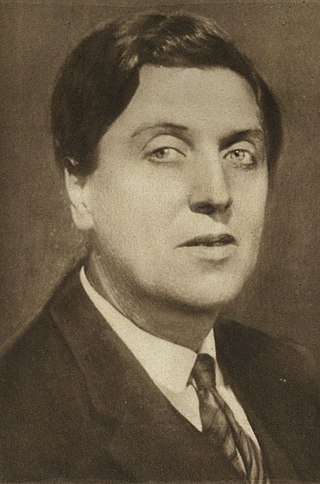
Alban Maria Johannes Berg was an Austrian composer of the Second Viennese School. His compositional style combined Romantic lyricism with the twelve-tone technique. Although he left a relatively small oeuvre, he is remembered as one of the most important composers of the 20th century for his expressive style encompassing "entire worlds of emotion and structure".

Anton Friedrich Wilhelm von Webern, better known as Anton Webern, was an Austrian composer and conductor. His music was among the most radical of its milieu in its sheer concision, even aphorism, and steadfast embrace and application of then novel atonal and twelve-tone techniques in an increasingly rigorous manner, somewhat after the Franco-Flemish School of his studies under Guido Adler. With his mentor Arnold Schoenberg and his colleague Alban Berg, Webern was at the core of those within the broader circle of the Second Viennese School.

Arnold Schoenberg or Schönberg was an Austrian-American composer, music theorist, teacher, writer, and painter. He is widely considered one of the most influential composers of the 20th century. He was associated with the expressionist movement in German poetry and art, and leader of the Second Viennese School. As a Jewish composer, Schoenberg was targeted by the Nazi Party, which labeled his works as degenerate music and forbade them from being published. He emigrated to the United States in 1933, becoming an American citizen in 1941.
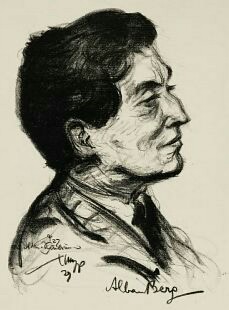
Alban Berg's Violin Concerto was written in 1935. It is probably Berg's best-known and most frequently performed piece. In it, Berg sought to reconcile diatonicism and dodecaphony. The work was commissioned by Louis Krasner, and dedicated by Berg to "the memory of an angel", Manon Gropius. It was the last work he completed. Krasner performed the solo part in the premiere at the Palau de la Música Catalana, Barcelona, on 19 April 1936, after the composer's death.
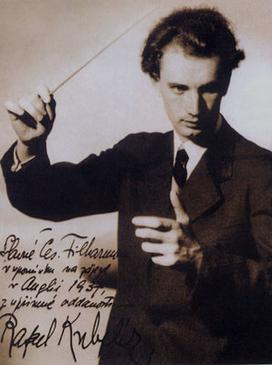
Rafael Jeroným Kubelík, KBE was a Czech conductor and composer.
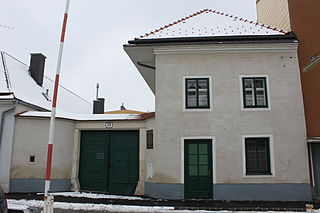
Josef Matthias Hauer was an Austrian composer and music theorist. He is best known for developing, independent of and a year or two before Arnold Schoenberg, a method for composing with all 12 notes of the chromatic scale. Hauer was also an important early theorist of twelve-tone music and composition.

Karl Rankl was a British conductor and composer who was of Austrian birth. A pupil of the composers Schoenberg and Webern, he conducted at opera houses in Austria, Germany and Czechoslovakia until fleeing from the Nazis and taking refuge in England in 1939.

Gurre-Lieder is a tripartite oratorio followed by a melodramatic epilogue for five vocal soloists, narrator, three choruses and grand orchestra. The work, which is based on an early song cycle for soprano, tenor and piano, was composed by the then-Austrian composer Arnold Schönberg from 1900 to 1903. Following a break he resumed orchestration in 1910 and completed it in November of 1911. It sets to music the poem cycle Gurresange by the Danish novelist Jens Peter Jacobsen.

A Survivor from Warsaw, Op. 46, is a cantata by the Los Angeles-based Austrian composer Arnold Schoenberg, written in tribute to Holocaust victims. The main narration is unsung; "never should there be a pitch" to its solo vocal line, wrote the composer.
Winfried Zillig was a German composer, music theorist, and conductor.
Paul August von Klenau was a Danish-born composer who worked primarily in Germany and Austria.
Günter Reich, also spelled Günther Reich and Gunther Reich, was an Israeli baritone of German birth. He was a member of the Staatsoper Stuttgart for more than 20 years and is known for interpreting the works of Arnold Schoenberg in collaboration with Michael Gielen and Pierre Boulez.
Janis Martin was an American opera singer who sang leading roles first as a mezzo-soprano and later as a soprano in opera houses throughout Europe and the United States. She was particularly known for her performances in the operas of Richard Wagner and sang at the Bayreuth Festival from 1968 to 1997.
Arnold Elston was an American composer and educator. Though he studied with Anton Webern, he did not himself use the twelve-tone technique.
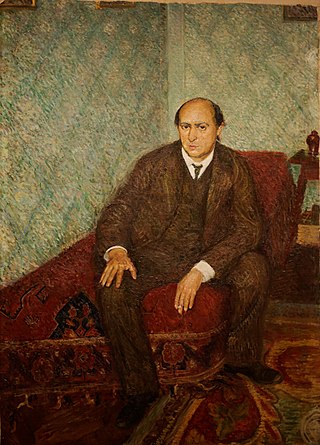
The Chamber Symphony No. 1 in E major, Op. 9 is a composition by Austrian composer Arnold Schoenberg.

Alexander Zemlinsky or Alexander von Zemlinsky was an Austrian composer, conductor, and teacher.
Gertrud Bertha Schoenberg was an Austrian opera librettist. She was the second wife of Austrian composer Arnold Schoenberg, whom she married in 1924, and the sister of his pupil, the violinist Rudolf Kolisch.

Mary Dickenson-Auner was an Irish violinist, composer, and music teacher. She wrote symphonies, oratorios, operas, and chamber works, with some of her early works appearing under the pseudonym Frank Donnell. During her career as a professional violinist, she performed the world premiere of Béla Bartók's Violin Sonata No. 1 and also worked with Arnold Schoenberg.
Ursula Zollenkopf is a German classical contralto singer. A member of the NDR Chor based in Hamburg, she appeared as a soloist in opera and concert, including premieres of contemporary music such as Stravinsky's Threni and Schoenberg's Moses und Aron.

The Begleitungsmusik zu einer Lichtspielscene, Op. 34 —also known in English as Accompaniment to a Film Scene, Accompaniment to a Cinematographic Scene, Accompaniment to a Cinematic Scene, and Music to Accompany a Cinema Scene—is an orchestral work by Arnold Schoenberg composed in late 1929 and early 1930.













